Digital futures: Sam Jacob Studio creates an installation based on the humble shed
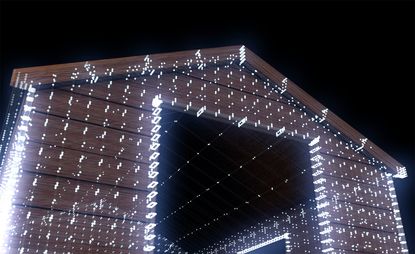
Sam Jacob Studio, the London-based architecture practice set up by FAT co-founder Jacob, has just launched 'One Thing After Another', an installation in collaboration with manufacturers Sto. The exhibit, presented at the Sto Werstatt gallery space as a part of Clerkenwell Design Week, explores the possibilities of digital fabrication using as its starting point a mundane yet quintessential form of architecture: the humble garden shed.
Through his installation, Jacob aims to enter the debate around the ethics of digital ownership and replication, recently brought back to the spotlight when German artists Nora Al-Badri and Jan Nikolai Nelles secretly 3D-scanned the head of Nefertiti from Berlin’s Neues Museum with the intention of initiating a dialogue on the notion of possession. When they released the CAD files for public use, they provided the world with the opportunity to download and print a copy of the bust for their own.
'What is architecture's place within this digital analog dialogue?' asks Jacob. ‘One Thing After Another' is part of a series of projects we’ve been working on that explore the possibilities of digital inputs and outputs,’ he explains, ‘they explore how objects can be transmitted through forms of technology and how that transmission leaves its trace within architectural substance.’
The installation is composed of three parts, borrowing the format of the Russian nesting doll and using a shed bought on eBay as a prototype. ‘This ‘post-digital’ architecture is more than a building: it’s information that remains in flux, that can be evaporated, distilled and precipitated between digital file and physical construction then back again’, says Jacob.
A small 3D printed version of the shed is situated within the original one. They both sit with a much larger, scaled up version, constructed from a number of CNC milled pieces from Sto’s innovative material, Verolith. This lightweight material consists of 90% perlite, a type of volcanic stone. To finish, the new shed’s interior is lined with StoVentec, a glossy coloured glass panelling.
‘One Thing After Another’ highlights the exchange of information between the digital and the physical world, embracing a new and alternative angle that looks into imperfections in construction, fidelity, and architectural representation in our ever growing digital world.
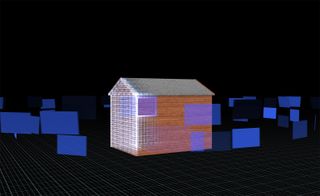
The exhibit, which is part of Clerkenwell Design Week, explores the possibilities of digital fabrication using a mundane, yet quintessential form of architecture – the garden shed – as its starting point. Courtesy Rumble-London productions

The installation is composed of three parts, similar in format to a Russian nesting doll. Courtesy Rumble-London productions
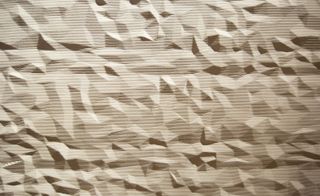
The largest shed model is made from CNC milled pieces out of Sto’s innovative material Versolith, a lightweight material consisting of 90 per cent perlite, a type of volcanic stone
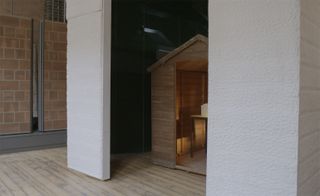
The shed used as a prototype for this project was simply bought from an ebay seller in Essex. It was selected for its familiar, generic form, which would not draw too much attention

‘One Thing After Another’ highlights the exchange of information between the digital and the physical world
INFORMATION
'One Thing After Another' will be on show at Sto Werkstatt until the end of June 2016. For more information, visit the website
Photography: David Parry
Wallpaper* Newsletter
Receive our daily digest of inspiration, escapism and design stories from around the world direct to your inbox.
-
 Audi launches AUDI, a China-only sub-brand, with a handsome new EV concept
Audi launches AUDI, a China-only sub-brand, with a handsome new EV conceptThe AUDI E previews a new range of China-specific electric vehicles from the German carmaker’s new local sub-brand
By Jonathan Bell Published
-
 Inside Izza Marrakech: A new riad where art and bohemian luxury meet
Inside Izza Marrakech: A new riad where art and bohemian luxury meetHonouring the late Bill Willis’ hedonistic style, Izza Marrakech fuses traditional Moroccan craftsmanship with the best of contemporary art
By Ty Gaskins Published
-
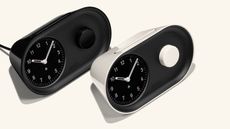 Clocking on: the bedside analogue timepieces that won’t alarm your aesthetic
Clocking on: the bedside analogue timepieces that won’t alarm your aestheticWe track down the only tick-tocks that matter, nine traditional alarm clocks that tell the time with minimum fuss and maximum visual impact
By Jonathan Bell Published
-
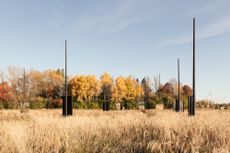 Exhibit Columbus to explore middle America and beyond
Exhibit Columbus to explore middle America and beyondThe 2020-2021 Exhibit Columbus theme and its J. Irwin and Xenia S. Miller Prize recipients line-up have just been revealed, placing the focus on the ‘middle city' during the upcoming annual Indiana architecture event
By Ellie Stathaki Last updated
-
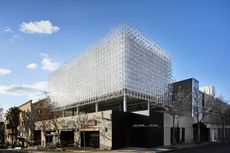 A storm is brewing inside March Studio’s cloud-like pavilion in Melbourne
A storm is brewing inside March Studio’s cloud-like pavilion in MelbourneRandom International’s Rain Room installation makes its Australian debut
By Dimity Noble Last updated
-
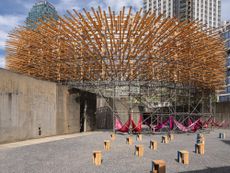 Pedro & Juana’s junglescape installation for MoMA Young Architects Program opens
Pedro & Juana’s junglescape installation for MoMA Young Architects Program opensBy Harriet Thorpe Last updated
-
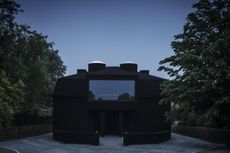 Studio MOTO and Hans Op de Beeck clad a villa in rubber
Studio MOTO and Hans Op de Beeck clad a villa in rubberBy Ellie Stathaki Last updated
-
 From an urban cabin in Los Angeles to co-living in Shanghai, MINI Living investigates the future of dwelling
From an urban cabin in Los Angeles to co-living in Shanghai, MINI Living investigates the future of dwellingBy Harriet Thorpe Last updated
-
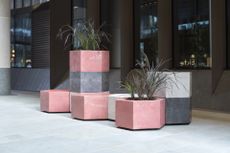 Take a seat: City Benches winning designs revealed during LFA
Take a seat: City Benches winning designs revealed during LFABy Ellie Stathaki Last updated
-
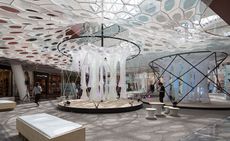 Jenny Sabin and Constructo team up for immersive installation in Chile
Jenny Sabin and Constructo team up for immersive installation in ChileBy Ellie Stathaki Last updated
-
 Pacific pavilions: Doug Aitken and Parley for the Oceans take art under the waves
Pacific pavilions: Doug Aitken and Parley for the Oceans take art under the wavesBy Ali Morris Last updated